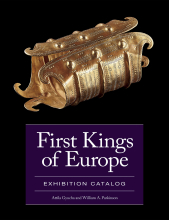Bird-shaped lamp - Catalog No. 69
This exceptional object was acquired by the Hungarian National Museum at the end of the nineteenth century. Based on its stylistic analogies, it was most likely manufactured in Slovakia or northeastern Hungary. The artifact has a hollow body and attached loops for hanging, and it was cast using the lost-wax technique, a technology which is most appropriate for producing objects with complex geometry.
